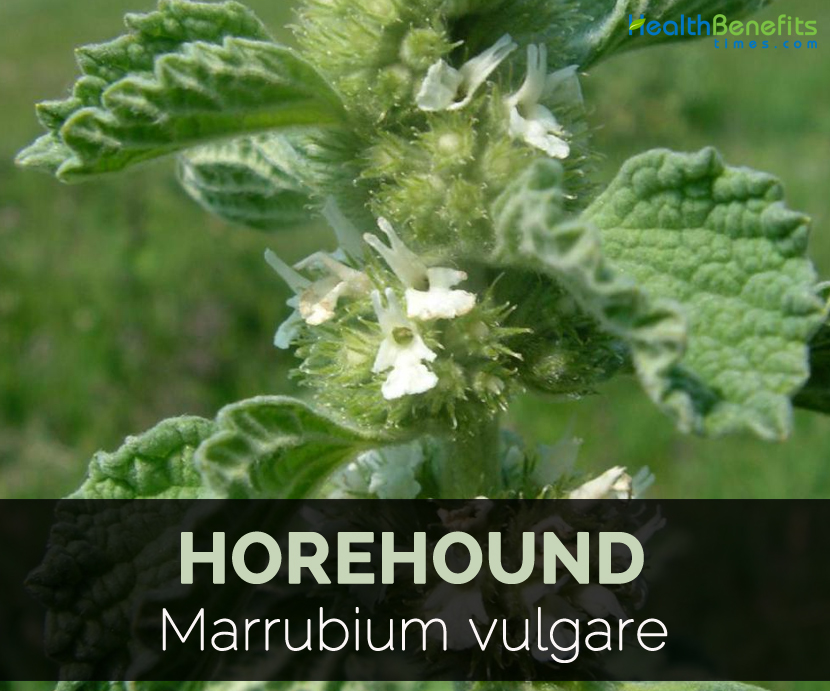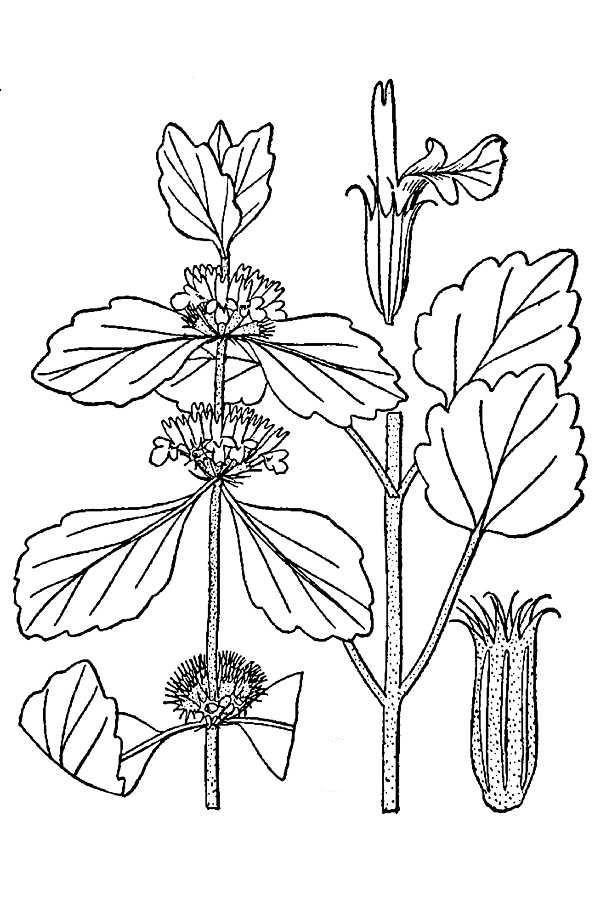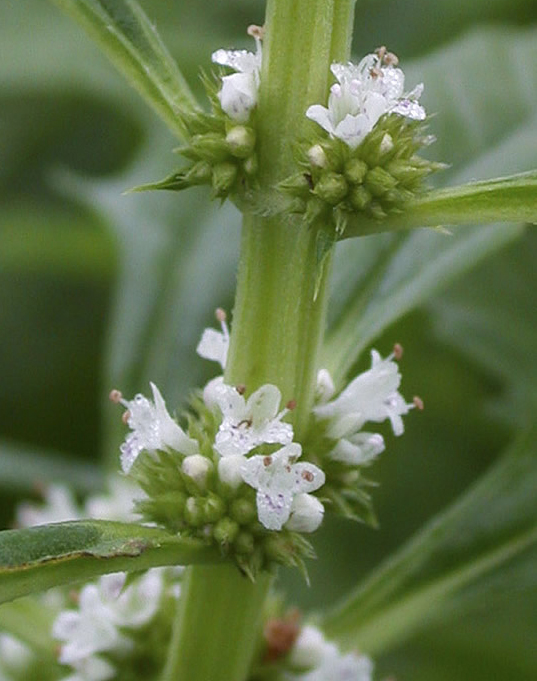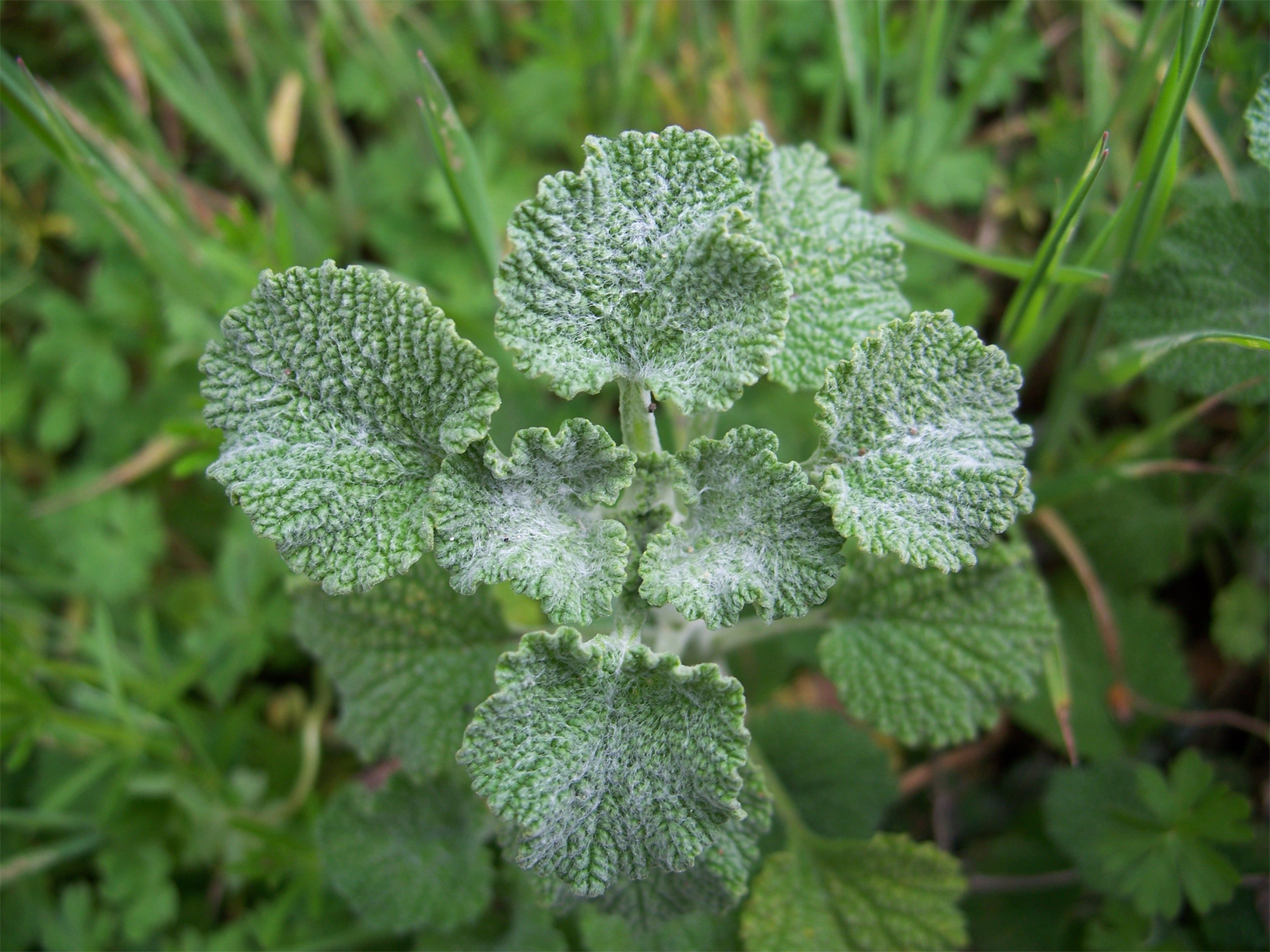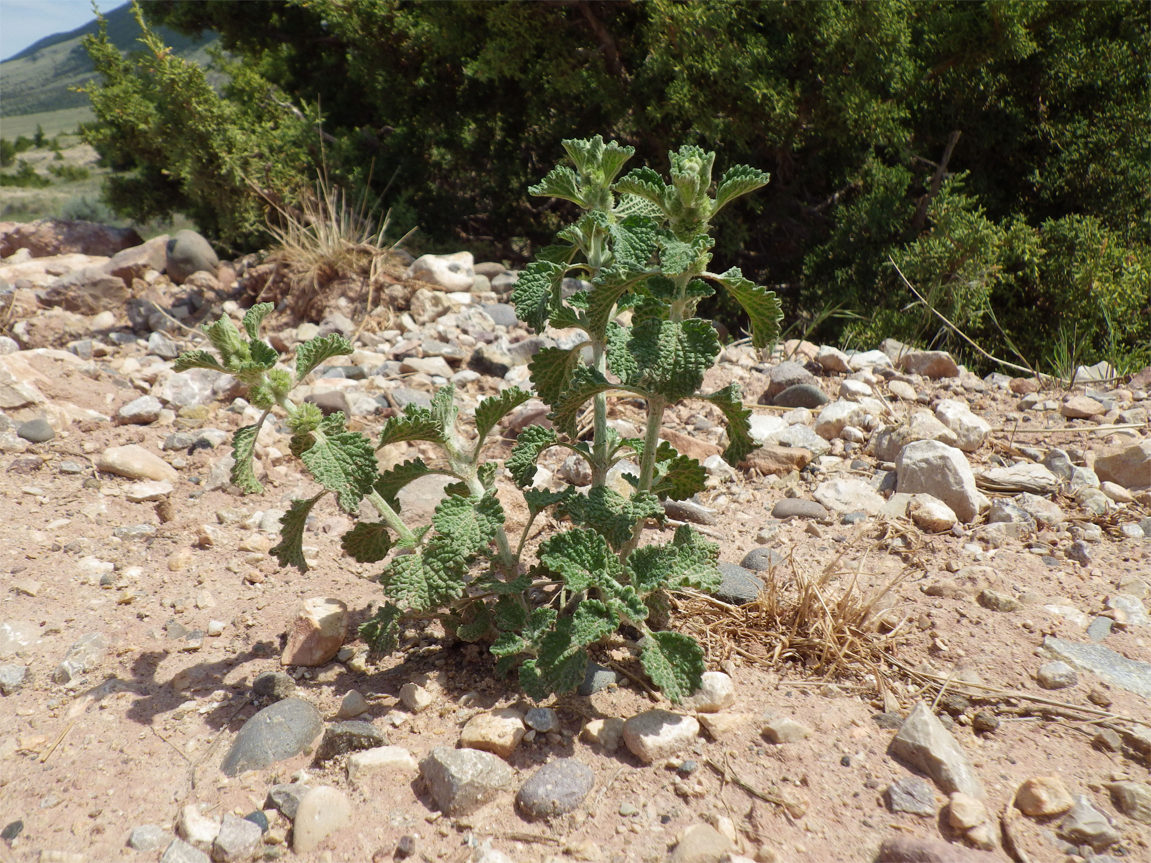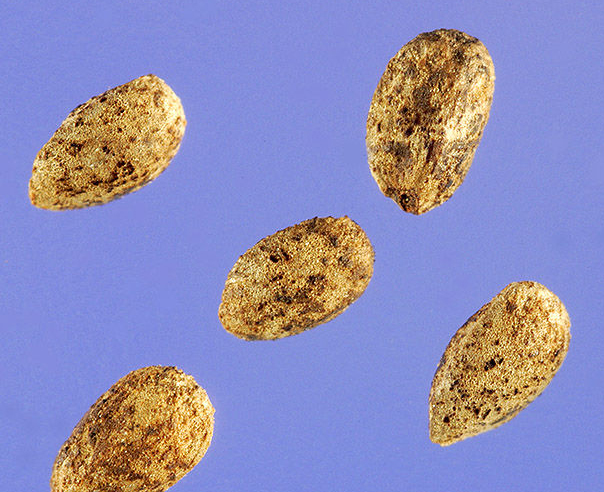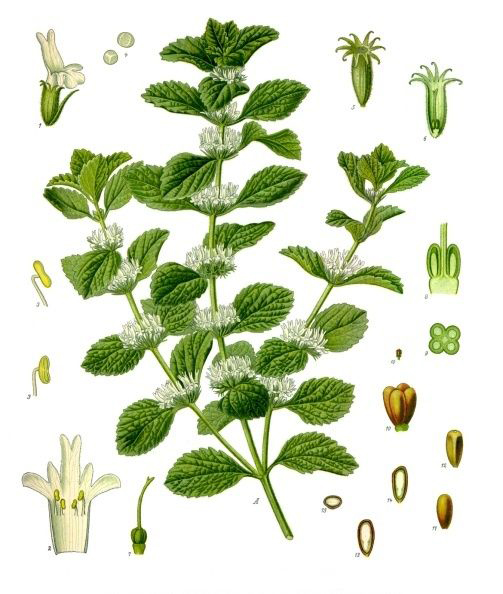| Horehound (White Horehound) Quick Facts |
| Name: |
Horehound (White Horehound) |
| Scientific Name: |
Marrubium vulgare |
| Origin |
Native to Mediterranean region to central Asia. It is also found in Central Europe and also got introduced to America, Australia and South Africa. |
| Colors |
Gray to brown |
| Shapes |
Ovate,1.5 to 2 mm long, obtusely triangular |
| Health benefits |
Prevent cancer, Lowers inflammation, Lowers cholesterol, Treat diabetes, Eliminate toxins |
Hoarhound is a herbaceous and perennial plant commonly known from its common names such as Houndsbane, White Horehound, Marrubium, Common white horehound, Green Pompon Horehound, Seed of horus, eye of the star, bull’s blood, houndsbane, adorn, haran haran, blanc rubi, grand bonhomme and mapiochin. Belonging to the family Lamiaceae, this plant is also used for edible purposes. White Hoarhound is scientifically known as Marrubium vulgare.
This plant has a long history of its use by humans though it lost its popularity over the years. It was used by an ancient Egyptians as the offering to the God of Morning Sun Horus. The plant extract is used to make candies and used as an aid for sore throat and cough during ancient times. The leaves were used as a substitute for tobacco.
Horehound is native to Mediterranean countries and also could be found in Southern and Central Europe, Asia and Northern Africa. It is available in western temperate regions of Himalayas, North-western India, Kashmir, Southeastern Iran and Southwestern Pakistan. It was introduced and got naturalized in various countries with suitable climate. It is cultivated and propagated by cuttings and seeds. The plant prefers nutrient-poor soil in dry and sunny habitat.
White horehound possesses marrubiin, a biiter diterpene lactone in addition to choline, alkaloids, flavonoids, essential oil, tannins, flavonoids, resins, mucilage, vitamin C and minerals. The plant has both culinary and medicinal uses. The combination of exclusive organic compounds found in White Horehound oil makes the plant very powerful. The leaves and flowers are used to extract essential oils.
History
Hoarhound is indigenous to Europe and has got naturalized in United States where it is found in common. It grows well on dry & sandy fields, roadsides and waste grounds. The plant flowers from June to September. The plant has got white/hoary appearance and is medicinal which is collected before its efliorescence. It possesses balsamic and vinous odor and is aromatic, bitter, acrid and persistent taste.
Plant
Hoarhound is a perennial herb which grows up from 20-45 cm (10-18 inches) tall having a fusiform root, woody, multi-headed root crown. It has erect, obtusely quadrangular, branched stems of 40-60 cm high and is 7 mm thick at base. The square stem is covered with short and whitish hair and the stem turns woody around base. Branches are spreading out, curved, loosely downy and obtusely quadrangular. Leaves have densely crinkled surface and measures about 0.8–2.0 inches (2-5 cm) long and is covered in downy hairs. The white flowers bloom on an upper portion of main stalk in small clusters. The plant provides musky smell.
Flower
Flowers are small, 5-7 mm long, labiate globular, sessile and white in color. It possess 6-8 richly flowered false whorls of 1.5-2 cm long found on each stem. Calyx is white, tubular and tomentose having ten awl shaped tips. The corolla is downy and white. These flowers appear in clusters on upper part of main stem. Flowers are two lipped divided into upper lip and lower lip. The lower lip is divided into three lobes and the upper lip is divided into two lobes. Flowers are enclosed by persistent green tube of 4-7 mm long and are made of fused sepals. The flower blooms throughout the year by commonly found during spring and summer.
Fruit
Flower gives way to the fruit that is about 1.5-2 mm long, ovate in shape, obtusely triangular and is gray to brown in color. It contains four seeds (nutlets or mericarps) which is enclosed in an old flower calyx. Seeds are brown or black in ovoid or pyriform shape measuring 1 to 2.5 mm long with slightly rough texture.
Leaves
The petiolate leaves are tomentose-downy, orbicular and unevenly crenate. It possesses a distinct veins underside and is wrinkled.
Health Benefits of Horehound (White Horehound)
White Horehound commonly known as Marrubium vulgare is a small perennial plant that resembles mint and belongs to the same family. It provides similar health benefits and is used as a vital plant in the traditional medicinal uses. The plant grows up to 18 inches with white flowers, small leaves that are covered with small hairs.
White horehound is effective to prevent certain types of cancer, protect immune system, boost heart health, treat diabetes, eliminate indigestion, soothe inflammation, gastrointestinal distress, and eliminate spasms and detoxification of body. The plant possesses various elements such as choline, betonicine, tannins, phenolic acids and volatile oil that make it suitable for various uses. Horehound possess various properties that acts as a wonder for human body by keeping heart healthy, rejuvenate skin by removing skin related problems.
- Prevent cancer
Horehound possesses anti-inflammatory properties that prevents cell death and lowers the chances of cancer in cells. The antioxidant properties help to neutralize free radicals which are dangerous byproducts of cellular respiration that are the cause for cell mutation and apoptosis and spontaneous cell death.
- Lowers inflammation
White horehound could be used as an oral consumption and topical mixtures. It improves the symptoms of arthritis that provides relief from coughing and sore throats. Additionally, it lowers constriction in blood vessels, lowers inflammation that helps to promote heart health by lowering blood pressure.
- Lowers cholesterol
The small dose of extract of horehound lowers the level of cholesterol level. It balances the cholesterol level by eliminating bad cholesterol that prevents buildup of plaque. It prevents atherosclerosis and lowers the chances of strokes and heart attacks caused by high cholesterol.
- Treat diabetes
White horehound is associated with lowering of blood sugar levels. It helps to normalize the blood sugar level which is effective for diabetes caused by fluctuations of blood sugar.
- Eliminate toxins
The plant is able to promote sweating that helps to eliminate toxins from the body such as excess water, salts, harmful substances and fats that cause illness.
- Cure spasms
White horehound acts as an antispasmodic that alleviates muscle twitches, seizures, spasms and cramps. It also soothes nervous system and prevents the chances of these conditions. The tea prepared from this herb has relaxing properties that calms the mind and body.
- Menstrual problems
Horehound is effective for those women who experience painful menstruation. It lowers the pain due to intense cramps and enhance mood or reduce mood swings. The presence of active ingredients found in Horehound extract provides hormonal effects.
- Digestive problems
Horehound helps to eliminate issues related to gut such as indigestion and constipation. It has antiseptic qualities that clears gastrointestinal tract by improving its function. It lowers inflammation in colon by preventing constipation, flatulence, excess bloating and hemorrhoids.
- Enhance immune system
The plant possesses antimicrobial and antibiotic properties that boost overall wealth. It protects immune system from foreign agents and pathogens and lowers stress on immune system. It could be found in mouthwashes, candies and toothpastes.
Traditional uses
- The herb is useful for acute or chronic bronchitis and whooping cough.
- It is used for loss of appetite, dyspepsia, flatulence, bloating and respiratory catarrh.
- Use it internally for chronic bronchitis, asthma, whooping cough, pulmonary catarrh, tuberculosis, respiratory infections, jaundice, diarrhea, painful menstruation, debility
- Use it externally for ulcers, skin damage and wounds.
- Gargle it for throat and mouth infections.
- It is used as a treatment for inflammation of respiratory tract.
- Use it in form of syrup for colds, coughs, asthma, chronic catarrh and pulmonary affections.
- A warm infusion is useful for asthma, jaundice, amenorrhoea, hoarseness and hysteria.
- A cold infusion is useful for dyspepsia.
- If used in large doses, it acts as a purgative and helps to eliminate worms.
- It is used to enhance appetite and assist the functions of stomach.
- The plant is used to normalize heart rhythm.
- It is effective for toothaches, sprains and headaches.
- It also lowers the pain related to menstrual cramps.
- The herb enhances secretion of stomach acids.
- The plant is effective for heartburn and also controls blood sugar levels.
- Use Horehound plant to cure skin problems.
Precautions
- The plant juice might cause contact dermatitis.
- Due to lack of information of use during pregnancy and lactation period, it is better to avoid.
- Excessive doses affects blood pressure, heart rhythm and blood glucose.
- Avoid by diabetes mellitus patients on allopathic medication.
- The people with irregular heartbeats, hypoglycemia, diabetes and heart problems should consult the doctor for use.
- In sensitive people, it causes skin rash.
- It causes vomiting, upset stomach and diarrhea.
How to Eat
- It is used to make hard lozenge candies, other candies and cough drops.
- Horehound is also added in beverages such as horehound beer, rock and rye cocktail and also steeped as tea.
- The plant is used to make herbal tea.
- The essential oil extracted from leaves is used to enhance flavor of ales and wines.
Other Facts
- It is used as a protection against evil doings and witches.
- This plant acts as anti-venom for poisonous insects, animals and snake bites.
References:
https://www.itis.gov/servlet/SingleRpt/SingleRpt?search_topic=TSN&search_value=32561#null
https://davesgarden.com/guides/pf/go/1116/
http://www.hear.org/pier/species/marrubium_vulgare.htm
https://npgsweb.ars-grin.gov/gringlobal/taxonomydetail.aspx?id=23450
http://www.floracatalana.net/marrubium-vulgare-l-
https://en.wikipedia.org/wiki/Marrubium_vulgare
https://www.herbal-supplement-resource.com/white-horehound-herb.html
http://www.onlyfoods.net/marrubium-vulgare.html
https://keyserver.lucidcentral.org/weeds/data/media/Html/marrubium_vulgare.htm
https://www.organicfacts.net/health-benefits/herbs-and-spices/white-horehound-2.html
Comments
comments


